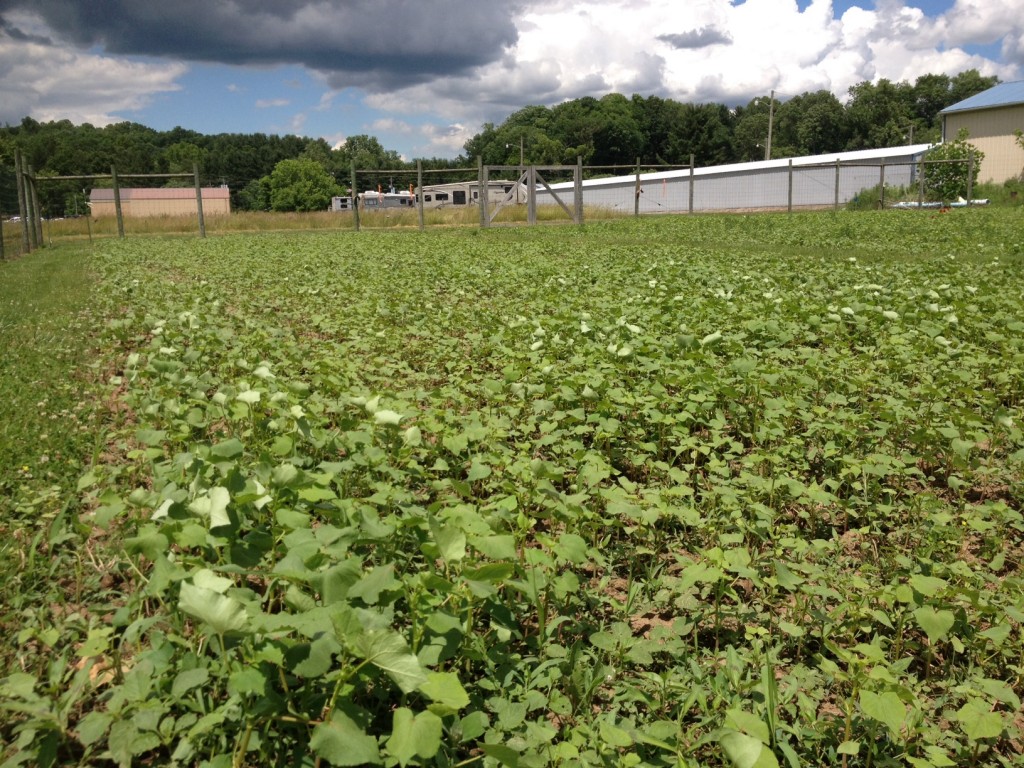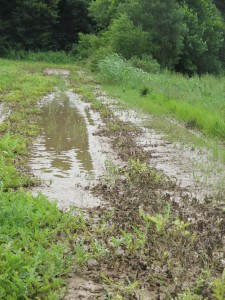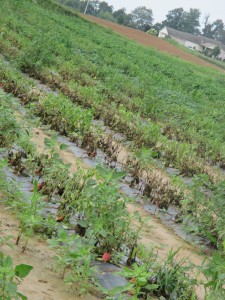One of the best ways to improve a patch of ground is by using a cover crop. Cover cropping is when you plant a certain plant or mix of plants into an area to solve an problem or improve the soil. Things cover crops can do include:
- add biomass
- smother weeds
- drill through hardpan
- increase fertility
- prevent runoff and erosion
- tie nutrients up in the soil
Almost sounds too good to be true, but it is not. Cover crops have been used for a long time in agriculture and with the increased focus on preventing nutrient loss into our waterways and the resulting problems this has resulted in, you will be hearing more about them in the future.
Currently I am monitoring/helping with three different small scale cover crop experiments. I do not have 100 acres of corn or soybeans so I am observing them in three different community garden experiments.
Experiment 1: Demonstration garden at the fairgrounds.

Tomatoes into no-till residue
Rob and Rebecca planted winter rye, crimson clover and vetch into the raised beds last fall and crimped them over in spring, the tomatoes went straight into holes in the residue and are doing great. This cover crop mix added fertility from the legumes, mulches the soil to prevent disease and water loss, prevented erosion over winter and added biomass from the top growth and root remnants. The tomatoes are doing great. If you go to the garden, you will see they are outperforming tomatoes planted into straight compost.
Experiment 2: Logan Community Garden

Buckwheat in unused plots
The Logan Community Garden had some space that needed filled that was not going to be used this season and had a fair amount of weeds present. The cover crop for this area needed to smother weeds, prevent erosion, keep the soil in use, tie up nutrients and be easy to manage. The crop chosen was Buckwheat, which is elite at all these needs. The crop is entering flowering right now if you visit the garden and will be a magnet for pollinators, helping the vegetables the gardeners have as well. It will be mowed to prevent it from setting seed and allowed to decompose in place adding organic matter.
Experiment 3: Wallace Community Garden

BMR sorghum x sudangrass
Sheesh, what guy planted this? (me). This spotty planting of BMR(brown mid-rib) Sorghum X Sudangrass is being used as a three year rotation in my garden plot. My needs are for weed control, increased fertility, increased biomass/organic matter and sub-soil drilling through hardpan. I have not used this variety before, but have heard many wonderful things about it and its reputation is stellar. It will get very tall, like corn, and should completely take over this plot by mid summer. I will mow it to keep it a couple/few feet tall which will signal the roots to double down on root growth. I will let you all know how this turns out over the season.
Would you like to learn more about cover crops? I will be talking about cover crops as well as Fertilizers, Organic Matter and Soil Health on Tuesday June 14th at 7pm in a FREE class at the Youth Center, bring friends and questions and hope to see you there.































